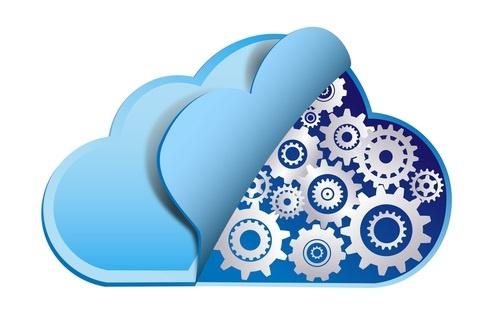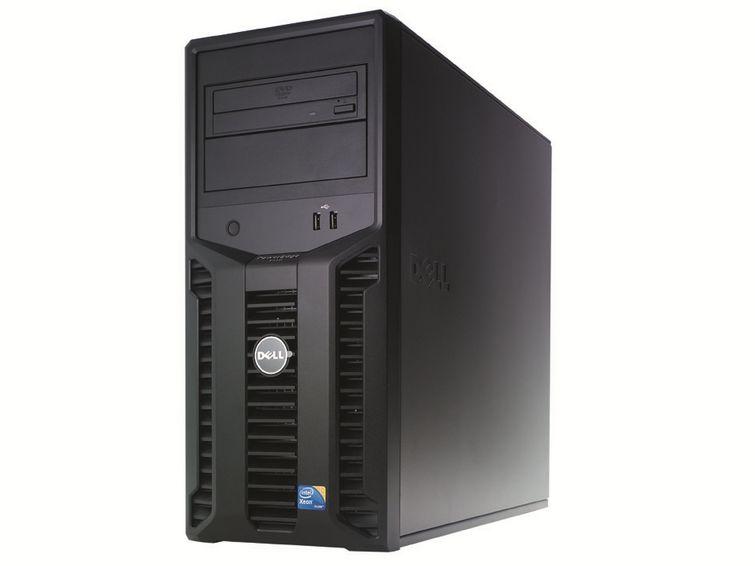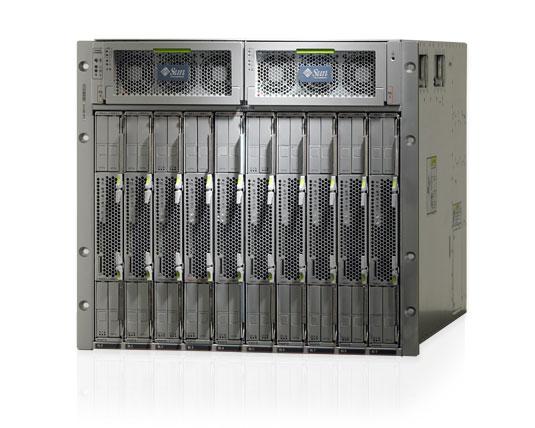How to choose a server for a small company: a guide for doubters
So, your business has grown significantly, and you need to buy the first server. Congratulations! Acquiring a server is a very important decision, so a little excitement is fully justified. With the help of this guide, we will clarify the main points that will help determine which type of server is best suited for your tasks, as well as the price range.

Why is this manual worth reading? At least there are 2 reasons:
Although a small server may not differ from a modern desktop computer, both machines are designed for completely different tasks. The desktop computer is designed for use by one person who needs a friendly operating system to work in desktop applications such as a text editor, an accounting program, an email client, and a browser. A special server operating system is installed on the server, which provides wider functionality for users. It is geared towards multi-user applications such as mail, messaging, print servers, event scheduling services, databases, ERP and CRM systems.
')
In addition, the server allows your employees to share information and interact with each other, because it acts as a central repository for all your documents, images, contacts and other important files. It is possible to host an intranet portal so that employees can exchange information quickly and without delay. Establish a virtual corporate network, then you and your employees will be able to have remote access to information located on the server from anywhere in the world where there is access to the Internet. On top of that, the server can automatically back up desktop and portable systems so that you never lose important information if one of the computers fails or you lose it. Servers are designed to provide reliability, security, and fault tolerance, with reduced storage options. If you are planning to expand your business, choose the server that can be scaled and that will grow with your business.
 Why not put everything in the cloud? Services like Amazon Web Services, Microsoft, and Rackspace Cloud Hosting can offer certain benefits:
Why not put everything in the cloud? Services like Amazon Web Services, Microsoft, and Rackspace Cloud Hosting can offer certain benefits:
But do not forget about the minuses:
It is worth remembering that you do not pay IT employees, do not pay for the maintenance of equipment and do not invest directly in the purchase of new equipment, you only pay for the services of a cloud provider. Often this cost will be more than buying a server.
The best-known brands on the server market are Dell, Fujitsu, HP, IBM, Lenovo, and Oracle. Choosing the right server depends more on those applications that you intend to run on it.
If a:
That should consider a full version of the server:
Before embarking on a detailed description of each type of server, we will briefly talk about virtualization. Virtualization can bring significant benefits to companies of any size, because it allows an enterprise to more efficiently use its IT resources.
Virtualization turns one server into several, each of which has its own operating system and a unique set of applications. A virtual machine consists solely of software, while it has all the server hardware components: a motherboard, a processor, a hard disk, a network controller, and so on. The operating system and other applications run on a virtual machine in the same way as on a physical server - there are no differences between them.
In virtualization, a special program hypervisor manages multiple virtual machines with the same operating system or different operating systems on the same physical server. In the top developers of virtual machines - Microsoft, Oracle and VMware.
How does virtualization make more efficient use of your IT resources? Servers are designed to provide peak loads, although they are often underused most of the time. In fact, a normal server is used only by 5-15% of all its resources. By running multiple virtual machines on the same physical server, the server uses these resources more efficiently, increasing resource utilization between 60 and 80%. Instead of running one physical server for mail, one for working with a database, one for an intranet and another for a CRM system, you can run all these applications on different virtual machines that will run on the same physical server.
Benefits:
Disadvantages:
Now let's look at the different types of servers on the market and price range. Prices are given for both new and used servers on 04/26/2016 (sources: Yandex.Market, squadra-group.com ).

Tower servers can be easily confused with the system unit. They can be installed on the floor, on a table or improved for rack mounting. Tower servers are quieter than other types of server hardware because they do not need cooling fans. The most top "tower" servers with a productive processor, a bunch of RAM and many hard drives can help you even with the organization of virtualization.
Benefits:
Disadvantages:
Price range:
If you do not rule out the possibility that you will need several servers in the future or right now, consider purchasing rack-mount servers. This type of server has a standard width (fit in 19-inch racks) and a standard height (a multiple of 1.75 inches or 1 unit; a standard rack of 42 units in height). The rack allows servers to be located in a relatively small area, and usually includes a cable system necessary for connection.

Rack servers do not differ in their equipment from many tower servers: they are equipped with sockets for several processors, a large number of slots for RAM, and large space for data storage. Rack systems have good scalability. If you purchase a rack or cabinet, you do not need additional floor space to install additional servers until the rack or cabinet is filled.
Since rack-mount servers operate in close proximity to each other, they need more active cooling than floor-mounted servers. Coolers in such servers can be quite loud, you need a climate control system to cool the whole rack. For this reason, many companies install rack servers in a specially equipped room.
Benefits:
Disadvantages:
Price range:
Universal model for solving most problems Supermicro 6016T-NTF 2 * E5645.
The main difference between rack servers and blade servers is that they are installed in the chassis / chassis. Adding a new server is as easy as inserting a new blade into the chassis. You can install network components such as Ethernet switches, firewalls, and load balancers, along with servers, and you can mount them all in a rack. Because the chassis provides power, cooling, I / O, and interconnection for all components inside the chassis, you do not have to look for new cables when you add something. Blade servers are smaller and can use more computing resources than any other server ecosystem, and the cost of capital investment is much higher because you need to buy additional infrastructure.

Blade servers have their drawbacks. Usually they provide less room for expansion, because they are not equipped with such a large number of PCIe slots and baskets for disks, like Tower servers or rack-mount servers. On the other hand, companies that deploy blade servers usually have data storage systems installed to keep the blades running (you can put a storage network directly with the servers in some blade enclosures). As you might guess, the location of all these components in such proximity to each other generates a lot of heat. Blade systems, like rack servers, require active cooling.
Benefits:
Disadvantages:
Price range:
So, we have considered various server options that you can purchase for your company. The spread is very large, so you should follow the following instructions:

Why is this manual worth reading? At least there are 2 reasons:
- You do not throw money away
- You will choose the server that will perfectly cope with the tasks
Server Basics
Although a small server may not differ from a modern desktop computer, both machines are designed for completely different tasks. The desktop computer is designed for use by one person who needs a friendly operating system to work in desktop applications such as a text editor, an accounting program, an email client, and a browser. A special server operating system is installed on the server, which provides wider functionality for users. It is geared towards multi-user applications such as mail, messaging, print servers, event scheduling services, databases, ERP and CRM systems.
')
In addition, the server allows your employees to share information and interact with each other, because it acts as a central repository for all your documents, images, contacts and other important files. It is possible to host an intranet portal so that employees can exchange information quickly and without delay. Establish a virtual corporate network, then you and your employees will be able to have remote access to information located on the server from anywhere in the world where there is access to the Internet. On top of that, the server can automatically back up desktop and portable systems so that you never lose important information if one of the computers fails or you lose it. Servers are designed to provide reliability, security, and fault tolerance, with reduced storage options. If you are planning to expand your business, choose the server that can be scaled and that will grow with your business.
Cloud alternative is a worthy alternative?

- Initially, they do not require serious capital investments, there is no need to hire IT specialists to manage the server.
- You can not worry about the hardware and software, which eventually become obsolete and go out of use.
But do not forget about the minuses:
- The service provider may experience financial difficulties or even become bankrupt in the future, there is a risk of permanently or permanently losing access to all of your data.
- In the absence of Internet access, you will be cut off from your applications and information; employees will not be able to share files.
- If the company has a slow Internet and employees use large files, then work efficiency suffers.
- Storing information on equipment outside of your direct control focuses on privacy and security.
It is worth remembering that you do not pay IT employees, do not pay for the maintenance of equipment and do not invest directly in the purchase of new equipment, you only pay for the services of a cloud provider. Often this cost will be more than buying a server.
Choose the right server for your needs.
The best-known brands on the server market are Dell, Fujitsu, HP, IBM, Lenovo, and Oracle. Choosing the right server depends more on those applications that you intend to run on it.
If a:
- Your company has more than 10 employees who use computers.
- You must use a mail or print server.
- You plan to work with a complex database or work in specialized server applications (such as ERP or CRM).
- You have large data storage requirements or you need capabilities for large-scale virtualization.
That should consider a full version of the server:
- Tower type servers.
- Rack mount rack servers.
- Blade servers (Blade servers).
Virtual Server Overview
Before embarking on a detailed description of each type of server, we will briefly talk about virtualization. Virtualization can bring significant benefits to companies of any size, because it allows an enterprise to more efficiently use its IT resources.
Virtualization turns one server into several, each of which has its own operating system and a unique set of applications. A virtual machine consists solely of software, while it has all the server hardware components: a motherboard, a processor, a hard disk, a network controller, and so on. The operating system and other applications run on a virtual machine in the same way as on a physical server - there are no differences between them.
In virtualization, a special program hypervisor manages multiple virtual machines with the same operating system or different operating systems on the same physical server. In the top developers of virtual machines - Microsoft, Oracle and VMware.
How does virtualization make more efficient use of your IT resources? Servers are designed to provide peak loads, although they are often underused most of the time. In fact, a normal server is used only by 5-15% of all its resources. By running multiple virtual machines on the same physical server, the server uses these resources more efficiently, increasing resource utilization between 60 and 80%. Instead of running one physical server for mail, one for working with a database, one for an intranet and another for a CRM system, you can run all these applications on different virtual machines that will run on the same physical server.
Benefits:
- Eliminates the need to use additional physical servers, as well as power, cooling, backup, physical space, etc.
- The ability to deploy a new virtual server in just a few minutes.
Disadvantages:
- Ensuring the simultaneous operation of several virtual machines will require a sufficient amount of hardware capacity.
- Depending on the solution used, the operating system of the virtual machine may run slower than on “pure” similar hardware.
Now let's look at the different types of servers on the market and price range. Prices are given for both new and used servers on 04/26/2016 (sources: Yandex.Market, squadra-group.com ).
"Tower" servers (floor servers, tower servers)

Tower servers can be easily confused with the system unit. They can be installed on the floor, on a table or improved for rack mounting. Tower servers are quieter than other types of server hardware because they do not need cooling fans. The most top "tower" servers with a productive processor, a bunch of RAM and many hard drives can help you even with the organization of virtualization.
Benefits:
- Hot swappable.
- Advanced remote control functionality.
- Low loud
Disadvantages:
- Poor scalability.
Price range:
| Data | New equipment | Used equipment | ||
| Price from, rub. | HP ProLiant ML10 Gen9 NHP Tower (4U) / Pentium G4400 2C 3.3GHz (3Mb) / 1x4Gb / Without HDD / 1x300W (NHP) | 23,760 | HP ProLiant ML150 G6, 1 * Quad-Core E5540 2.53GHz, 16GB DRAM, 2x 500GB SATA | 55,404 |
| Price up to RUB | HP ProLiant ML350 HPM Gen9 E5-2650v3 Tower (5U) / 2xXeon10C 2.3GHz (25MB) / 32Gb / P440ar / without HDD / 2x800wPlat | 488 477 | HP ProLiant ML350 G6, 1 * Quad-Core E5520 2.26GHz, 6GB DRAM | 132 980 |
Rack servers
If you do not rule out the possibility that you will need several servers in the future or right now, consider purchasing rack-mount servers. This type of server has a standard width (fit in 19-inch racks) and a standard height (a multiple of 1.75 inches or 1 unit; a standard rack of 42 units in height). The rack allows servers to be located in a relatively small area, and usually includes a cable system necessary for connection.

Rack servers do not differ in their equipment from many tower servers: they are equipped with sockets for several processors, a large number of slots for RAM, and large space for data storage. Rack systems have good scalability. If you purchase a rack or cabinet, you do not need additional floor space to install additional servers until the rack or cabinet is filled.
Since rack-mount servers operate in close proximity to each other, they need more active cooling than floor-mounted servers. Coolers in such servers can be quite loud, you need a climate control system to cool the whole rack. For this reason, many companies install rack servers in a specially equipped room.
Benefits:
- The possibility of expansion.
- High functionality and reliability.
Disadvantages:
- High noise.
Price range:
| Data | New equipment | Used equipment | ||
| Price from, rub. | HP Proliant DL60 Gen9 E5-2603v3 Rack (1U) / Xeon6C 1.6GHz (15Mb) / 4Gb / B140i / Without HDD / DVDRW / iLOstd (no port) / 1x550W (NHP) | 73,038 | Supermicro SYS-6015B-8B, 2 * Quad-Core E5345 2.33GHz, 4GB DRAM | 10,400 |
| Price up to RUB | HP Proliant DL380 HPM Gen9 E5-2650v3Rack (2U) / 2xXeon10C 2.3GHz (25MB) / 32Gb / P440ar / Without HDD / DVDRW / iLOadv / 2x800wPlat | 668 832 | Supermicro SuperServer 6017R-NTF, 2 * Intel E5-2670 2.60GHz, 96GB DRAM, 2x1TB HDD, 560W | 185,400 |
Blades servers
The main difference between rack servers and blade servers is that they are installed in the chassis / chassis. Adding a new server is as easy as inserting a new blade into the chassis. You can install network components such as Ethernet switches, firewalls, and load balancers, along with servers, and you can mount them all in a rack. Because the chassis provides power, cooling, I / O, and interconnection for all components inside the chassis, you do not have to look for new cables when you add something. Blade servers are smaller and can use more computing resources than any other server ecosystem, and the cost of capital investment is much higher because you need to buy additional infrastructure.

Blade servers have their drawbacks. Usually they provide less room for expansion, because they are not equipped with such a large number of PCIe slots and baskets for disks, like Tower servers or rack-mount servers. On the other hand, companies that deploy blade servers usually have data storage systems installed to keep the blades running (you can put a storage network directly with the servers in some blade enclosures). As you might guess, the location of all these components in such proximity to each other generates a lot of heat. Blade systems, like rack servers, require active cooling.
Benefits:
- Scalable.
- High performance.
Disadvantages:
- High initial costs for the purchase of equipment and its further maintenance.
Price range:
| Data | New equipment | Used equipment | ||
| Price from, rub. | HP BladeSystem chassis c7000 Sin-Phase 10U Platinum Enclosure (up to 16 c-class blades), incl. 6 PS (6up) Blade HP ProLiant BL460c Gen9 E5-2660v3 / 2xXeon10C 2.6GHz (25MB) / 64Gb / P244br / iLO | 1,739,580 | HP BladeSystem C7000 Blade System (6 PSU + 10 FAN + 1 ADM) + 8x BL460 G6 2xXeon Quad-Core L5630 2.13Ghz / 32Gb (8x4) PC3-10600 / no HDD) + 2x Cisco 3020 | 405 500 |
| Price up to RUB | HP BladeSystem C7000 Blade System (6 PSU + 10 FAN + 1 ADM) + 6x BL460 G7 2xXeon Six-Core 5670 2.93 Ghz / 96Gb (12x8) PC3-10600 / no HDD) + 2 Cisco 3020 | 915 599 | ||
Conclusion
So, we have considered various server options that you can purchase for your company. The spread is very large, so you should follow the following instructions:
- Identify the tasks that the server will solve.
- Evaluate the conditions of use of the server (number of employees, location of the server installation and the intended applications).
- Determine what characteristics the server should have.
- Compare prices for new equipment and used ones.
- Order your perfect server.
Source: https://habr.com/ru/post/282518/
All Articles